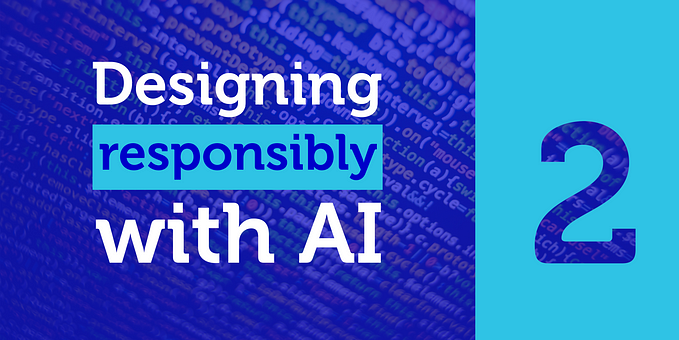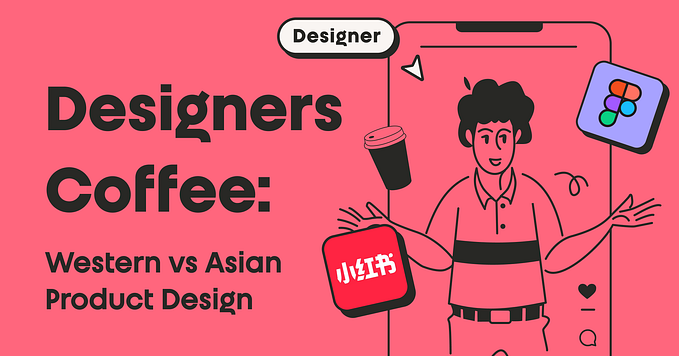Synthesis: How to make sense of your design research
This paper was originally destined for a talking head video as part of my study at Hyper Island, UK. The link to the video is at the end. It has not in-cite citations but all the references are in the time-coded bibliography at the end of the page.
This paper aims to present how you and your team can cross over the foggy process of synthesis and get the clear value of your design research.
Synthesis, in Human-Centred Design, is a collaborative process of sensemaking, which leads to creating a coherent summary of all the data gathered during the design research. Synthesis can be explained in 3 major steps. I will present you each one by telling what it is about, why it is essential and I’ll give you some practical tips on how to do it with your team.
So, let’s get started!

WHAT IT IS ABOUT?
This 1st step of design synthesis is about externalizing all the data gathered during your design research to make the content free to be moved and manipulated by the team. This way, the entire set of data can be seen at once which will help you and your team uncover implicit and hidden meanings.
WHY IT MATTERS?
Frequently designers keep the content of their research in their head or their laptop which dramatically limits their ability to see the forest for the tree. They lose the faculty to understand the research in totality and are limited in their ability to freely manipulate and associate individual pieces of data.” In Human-Centred design, the goal is to make the individual learnings group knowledge.
HOW TO DO IT?
One way of starting to make sense of your data is to share with your team the most inspiring stories you’ve heard from the people you’re designing for. Think about user stories or experiences that have stuck with you: stories which surprised you, made you curious, or verified or falsified your assumptions. As you listen to your teammates’ stories, write down notes and observations on Post-its.
By the end of this step, you will have hundreds of post-it notes on the wall organized around each research activity.
TIP 1: DECIDE HOW TO WRITE YOUR POST IT NOTES
Because of the complexity of comprehending so much data, you need to be organized. Choose a colour code that makes senses with your research, like one colour per type of research activities or users. Write one observation, insight, quote or idea per note and make sure that everyone can read them. Write concise and complete sentences which highlight an underlying behaviour and associated motivation. If it is an interview, write the name of the person.
TIP 2: START DOWNLOADING RIGHT AFTER EACH ACTIVITY
This process is best done the day of an interview or after a day in the field. Download while your experiences and perceptions are fresh.
TIP 3: SHARE ALL YOUR RESEARCH
It’s essential also to share stories which falsify your previous assumptions as you don’t want to risk moving forward just confirming your own wishes without really paying attention to your users’ core stories and needs. Don’t also forget to share surveys and secondary research.
TIP 4: IMMERSE YOURSELF
For this step, you need to listen to other’ stories actively, take no presumption and defer judgment.

WHAT IS IT ABOUT?
This step is about organizing all the data gathered to find patterns and themes.
WHY IT MATTERS?
Organizing data around themes will help you and your team go from group knowledge to start building a common understanding of your users’ needs. It is about reaching a consensus in your team about what are the most compelling insights or consistent problems the people you’re designing for are facing.
HOW TO DO IT?
Gather your team around your post-its from previous step and move the most compelling, common, and inspiring ones to a new board and sort them into categories until you review all the information.
TIP 1: DON’T BE AFRAID TO JUDGE
For this step, you need to shift your mindset because now it is time for pruning and filtering. Not all the data identified in a discovery process is relevant.
TIP 2: BE COMFORTABLE WITH AMBIGUITY
If a note connects to multiple groups, duplicate it, or abandon or rearrange already established groupings. In contrast, don’t force an insight into a group if you can’t connect it with confidence. Keep it aside for now, it might have more sense later.
TIP 3: BE PATIENT & TAKE BREAKS
Reaching a consensus takes time as you and your team will discuss, debate and talk through what’s emerging. If you feel lost in discussion or stuck, take some fresh air and come back to it after a break.

WHAT IT IS ABOUT?
This step is about identifying and interpreting the groupings and their relationships to make it explicit and informative.
WHY IT MATTERS?
Identifying the groupings and forging connections will force the introduction of a credible story of why the elements are related.” The goal is to gain a complete picture of your users’ needs that can be clearly communicated to an audience and easily translated into opportunities for design.
HOW TO DO IT?
Take the groupings you identified previously and start by giving them names. Then, for each theme, create an insight statement which will transform a theme into what feels like a core insight of your research.
TIP 1: TAKE SOME DISTANCE AND BE ABSTRACT
A good interpretation translates knowledge from the user into understanding — from fuzzy intuition to what is essential. It is less important to be accurate and more important to give some abstract and tangible form to the ideas. Understanding comes at the price of detail.
TIP 2: TRUST THE DATA
It is essential not to push interpretations too far. As the saying goes, if tortured, data will confess. The key to successful empathic design is a valid understanding of the user, not brilliance in interpretation.
TIP 3: REFINE YOUR INSIGHTS
It’s not always easy to create them, so to make sure it’s good, ask these questions: Is it inspiring? Does it have a story? Is there something new? Will it impact on design? Is it relevant to the brief? If you can say yes to all these questions, you’re probably in a good place.

So, to conclude, this is how success looks like.
You should have identified between 3 and 8 insights, and each of them should be supported by multiple research activities with data points, quotes, photos and observations all pointing to the same thing. If you have used one colour of post-it per activity, a rich insight should be supported by a colourful cluster!
If you have less than 3, it might suggest your research didn’t cover a wide enough range of people; if you have more than 8, that you haven’t been critical enough and might express the same insight multiple times.
That’s it! I hope this tutorial will help you in your next project and remember that synthesis methods are what will lead you to innovative ideas.
If you have any questions or feedback, feel free to contact me.
BIBLIOGRAPHY
00:55 Kolko, J. (2010), Abductive Thinking and Sensemaking: The Drivers of Design Synthesis. Design Issues. [Online] 26(1), 15–28. Available from: http://www.jstor.org.ezproxy.tees.ac.uk/stable/20627839 [Accessed 31th March 2018].
01:34 IDEO (2015) The Field Guide to Human-Centered Design (1st ed.). [Online] p. 77. Available from: http://www.designkit.org/resources/1 [Accessed 29 March 2018].
01:44 Interaction Design Foundation (n.d.) ‘Methods to help you define synthesise and make sense in your research’. In: Design Thinking: The Beginner’s Guide. Available at: https://www.interaction-design.org/literature/article/essential-design-thinking-videos-and-methods [Accessed 29 March 2018].
02:02 IDEO (2015) The Field Guide to Human-Centered Design (1st ed.). [Online] p. 78. Available from: http://www.designkit.org/resources/1 [Accessed 29 March 2018].
02:38 Interaction Design Foundation (n.d.) ‘Methods to help you define synthesise and make sense in your research’. In: Design Thinking: The Beginner’s Guide. Available at: https://www.interaction-design.org/literature/article/essential-design-thinking-videos-and-methods [Accessed 29 March 2018].
03:00 IDEO (2015) The Field Guide to Human-Centered Design (1st ed.). [Online] p. 77. Available from: http://www.designkit.org/resources/1 [Accessed 29 March 2018].
03:16 Interaction Design Foundation (n.d.) ‘Methods to help you define synthesise and make sense in your research’. In: Design Thinking: The Beginner’s Guide. Available at: https://www.interaction-design.org/literature/article/essential-design-thinking-videos-and-methods [Accessed 29 March 2018].
04:05 Cooper-Wright, M. (2015) Design Research From Interview to Insight: Part Two, Synthesising Insight. [Online] Medium. Available from: https://medium.com/design-research-methods/design-research-from-interview-to-insight-f6957b37c698
04:15 IDEO (2015) The Field Guide to Human-Centered Design (1st ed.). [Online] p. 80. Available from: http://www.designkit.org/resources/1 [Accessed 29 March 2018].
04:32 Kolko, J. (2010), Abductive Thinking and Sensemaking: The Drivers of Design Synthesis. Design Issues. [Online] 26(1), 15–28. Available from: http://www.jstor.org.ezproxy.tees.ac.uk/stable/20627839 [Accessed 31th March 2018].
04:49 Kolko, J. (2010), Abductive Thinking and Sensemaking: The Drivers of Design Synthesis. Design Issues. [Online] 26(1), 15–28. Available from: http://www.jstor.org.ezproxy.tees.ac.uk/stable/20627839 [Accessed 31th March 2018].
05:13 IDEO (2015) The Field Guide to Human-Centered Design (1st ed.). [Online] p. 80. Available from: http://www.designkit.org/resources/1 [Accessed 29 March 2018].
05:30 Kolko, J. (2010), Abductive Thinking and Sensemaking: The Drivers of Design Synthesis. Design Issues. [Online] 26(1), 15–28. Available from: http://www.jstor.org.ezproxy.tees.ac.uk/stable/20627839 [Accessed 31th March 2018].
06:06 IDEO (2015) The Field Guide to Human-Centered Design (1st ed.). [Online] p. 81. Available from: http://www.designkit.org/resources/1 [Accessed 29 March 2018].
06:20 Koskinen, I. (2004) ‘Empathic Design in Methodic Terms’. In: I. Koskinen, K. Battarbee and T. MattelmäKi (eds). Empathic Design: User Experience in Product Design. [Online] IT Press, p. 63. Available from: http://www2.uiah.fi/~ikoskine/recent_books/EmpathicDesign/Empathic_design.pdf
06:29 Kolko, J. (2010), Abductive Thinking and Sensemaking: The Drivers of Design Synthesis. Design Issues. [Online] 26(1), 15–28. Available from: http://www.jstor.org.ezproxy.tees.ac.uk/stable/20627839 [Accessed 31th March 2018].
06:41 Koskinen, I. (2004) ‘Empathic Design in Methodic Terms’. In: I. Koskinen, K. Battarbee and T. MattelmäKi (eds). Empathic Design: User Experience in Product Design. [Online] IT Press, p. 64. Available from: http://www2.uiah.fi/~ikoskine/recent_books/EmpathicDesign/Empathic_design.pdf
07:00 Cooper-Wright, M. (2015) Design Research From Interview to Insight: Part Two, Synthesising Insight. [Online] Medium. Available from: https://medium.com/design-research-methods/design-research-from-interview-to-insight-f6957b37c698








